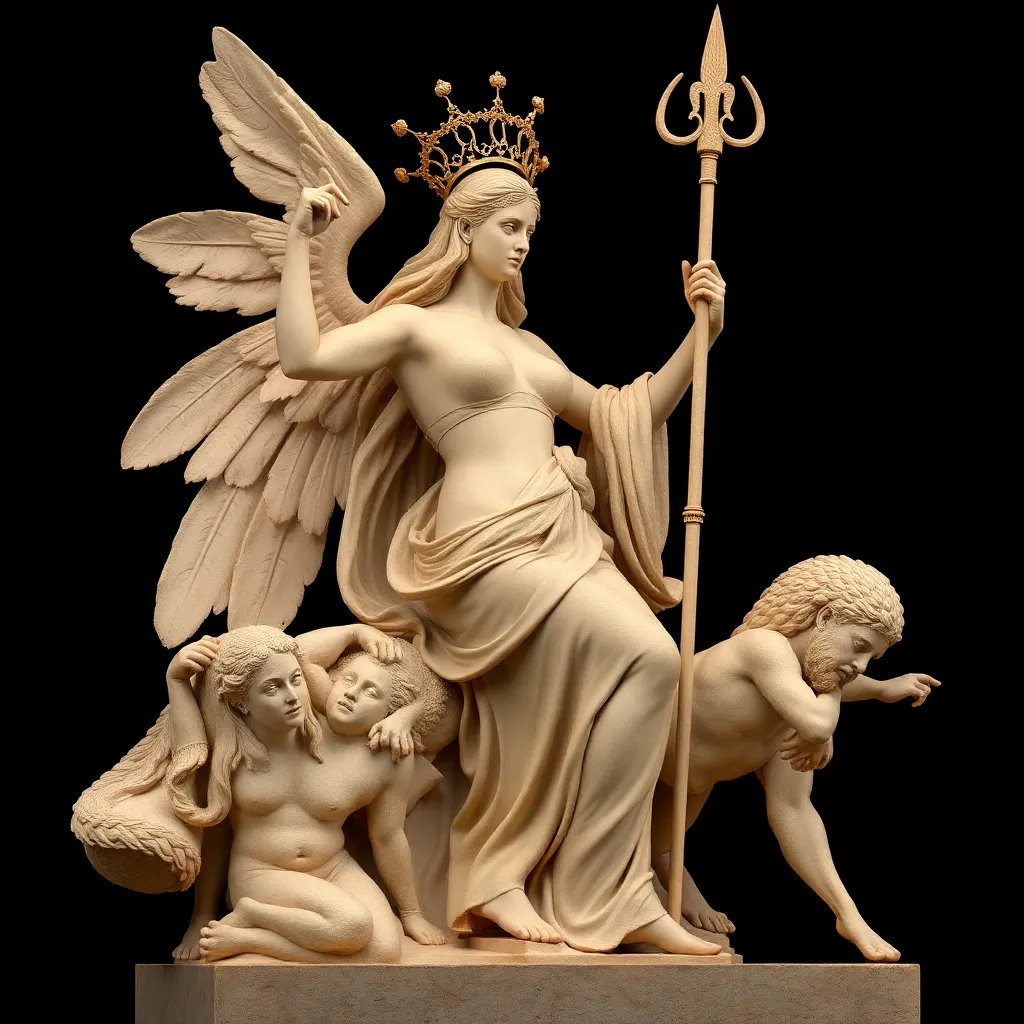The Evolution of Artemis: From Ancient Worship to Modern Interpretations
I. Introduction
Artemis, the Greek goddess of the hunt, wilderness, and childbirth, occupies a significant place in ancient mythology. Known for her fierce independence and close association with nature, Artemis was revered by the ancient Greeks as both a protector and a provider. Her evolution over the centuries reflects the changing beliefs and values of the societies that worshipped her.
Studying the evolution of Artemis offers valuable insights into how ancient practices and interpretations have influenced contemporary views on femininity, nature, and spirituality. This article aims to explore the journey of Artemis from her origins in ancient Greece to her reinterpretations in modern culture.
II. The Origins of Artemis in Ancient Greece
A. Historical context of Artemis in Greek religion
Artemis was one of the twelve Olympian deities, the children of the Titans Cronus and Rhea, and she was born on the island of Delos alongside her twin brother, Apollo. In the ancient Greek pantheon, Artemis was often associated with the moon, contrasting with her brother, who represented the sun.
B. Myths and stories surrounding her birth and attributes
According to myth, Artemis was born first and assisted her mother, Leto, in delivering Apollo shortly thereafter. This narrative emphasizes her role as a goddess of childbirth and protector of young women. Furthermore, Artemis is often depicted as a virgin goddess, which symbolizes purity and independence.
C. Role in the Olympian pantheon
As an Olympian deity, Artemis was worshipped across various city-states, each attributing unique qualities and stories to her. She was often seen as a protector of animals and the wilderness, embodying the untamed aspects of nature.
III. Worship Practices and Temples Dedicated to Artemis
A. Major sites of worship, including Ephesus
The most famous temple dedicated to Artemis was the Temple of Artemis at Ephesus, one of the Seven Wonders of the Ancient World. This grand structure served as a central place of worship and attracted pilgrims from far and wide.
B. Rituals, festivals, and cultural significance
Worship of Artemis included various rituals and festivals, such as the Brauronia, where young girls would participate in rites of passage. These festivals celebrated fertility, protection, and the transition into womanhood.
C. Impact of Artemis worship on local communities
The worship of Artemis fostered a sense of community and identity among her followers. It provided a framework for social norms regarding femininity and motherhood, shaping cultural practices and values.
IV. Symbolism and Iconography of Artemis
A. Common symbols associated with the goddess
- The bow and arrow, representing her skills as a huntress
- The deer, symbolizing her connection to wildlife
- The crescent moon, highlighting her lunar associations
B. Artistic representations through different periods
Artemis has been depicted in various artistic forms throughout history, from classical sculptures to pottery. Artists often portrayed her as a strong, athletic woman, emphasizing her independence and prowess.
C. Interpretation of her imagery in ancient art
The imagery of Artemis in ancient art often reflects societal attitudes towards women. Her representations convey both strength and vulnerability, embodying the dual aspects of her nature as a protector and a guardian of the vulnerable.
V. The Transition of Artemis through the Roman Era
A. Adaptations of Artemis in Roman culture
As Greek culture merged with Roman traditions, Artemis was assimilated into Roman mythology as Diana. While retaining many of her attributes, Diana also adopted new characteristics that reflected Roman values.
B. Comparison with the Roman goddess Diana
Diana was worshipped similarly to Artemis but emphasized different aspects of femininity and nature. Roman interpretations often highlighted her role as a goddess of the hunt and the moon.
C. Changes in worship and religious practices
The transition to Roman worship saw a decline in the communal aspects of Artemis worship. Instead, individual devotion became more prevalent, reflecting broader changes in Roman religion and society.
VI. The Renaissance and Rebirth of Interest in Artemis
A. Rediscovery of classical themes during the Renaissance
The Renaissance sparked a renewed interest in classical mythology, including the figure of Artemis. Artists and scholars sought to revive ancient ideals, leading to a resurgence in the depiction of mythological figures.
B. Influence of Artemis on art, literature, and philosophy
During this period, Artemis was often portrayed in works of art and literature as a symbol of purity and strength. Her image inspired numerous pieces, from paintings to poetry, reflecting the era’s fascination with myth.
C. The role of Artemis in feminist thought during this period
Artemis’s independence and strength made her a figure of interest in early feminist discussions. Her embodiment of female empowerment resonated with women seeking to challenge societal norms.
VII. Modern Interpretations and Cultural Representations
A. Artemis in contemporary literature and media
In modern literature and media, Artemis has been reinterpreted in various ways. She appears in novels, films, and television series, often portrayed as a symbol of strength and resilience.
B. The resurgence of interest in goddess worship and feminism
Contemporary movements focusing on goddess worship and feminism have revived interest in Artemis, viewing her as a powerful archetype for modern women. This resurgence reflects a desire to reclaim feminine figures from history.
C. Discussions on environmentalism and Artemis as a symbol
Artemis’s close association with nature and wildlife has positioned her as a symbol in environmental discussions. Conservation efforts often invoke her image, connecting her legacy with modern ecological movements.
VIII. Conclusion
Artemis’s evolution from an ancient deity to a modern icon illustrates her enduring relevance across cultures and eras. Her journey reflects changing attitudes toward femininity, nature, and spirituality, highlighting her complex identity.
In contemporary society, Artemis continues to inspire conversations about gender, environmentalism, and the reclamation of feminine power. As we look to the future, the figure of Artemis will likely remain a vital part of cultural and spiritual discourse, embodying themes that resonate with the human experience.




